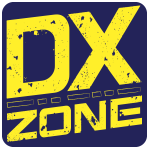WSJT-X 2.4.0 introduces Q65, a new digital protocol designed for minimal two-way QSOs over especially difficult propagation paths. On paths with Doppler spread more than a few Hz, the weak-signal performance of Q65 is the best among all WSJT-X modes.
Q65 uses message formats and sequencing identical to those used in FST4, FT4, FT8, and MSK144. Submodes are provided with a wide variety of tone spacings and T/R sequence lengths 15, 30, 60, 120, and 300 s. A new, highly reliable list-decoding technique is used for messages that contain previously copied message fragments. Message averaging is provided for situations where single transmissions are too weak or signal enhancements too sparse for a signal to be decoded.
Release: WSJT-X 2.4.0
May 24, 2021
———————
WSJT-X 2.4.0 General Availability Release adds new Q65 mode functionality and decoder optimizations and repairs several defects
and regressions discovered in the RC4 and v2.3.1 GA releases. Since the release candidates documented below this final release includes the following enhancements and defect repairs.
– On MS Windows WSJT-X now ships with a DLL version of the Hamlib library, specifically Hamlib version 4.2. This should allow Hamlib bug fixes to resolved by the user replacing the DLL with an updated version.
– Repair a defect with own call decode highlighting when callsigns with a common root are decoded.
– Q65 message averaging correctly disabled as be menu option.
– Repair a regression with missing timestamps in AlL.TXT for the MSK144 mode.
– Repair a defect in the selection of working frequencies matching the current band and mode combination.
– WSPR band hopping mode now generates a tune up tone for bands where it is scheduled to transmit.
– Repair a long standing defect per band tune and Tx power level memories.
– More flexibility for inputting calls into the DX Call field, leading and trailing white space characters are allowed but ignored.



Q65, oh what a joy to operate, no crowded bands, paeceful sounds to my ear and even a greater reach.
73, Alexander